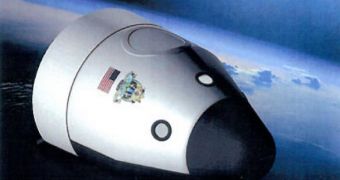Now that the American space agency announced that it awarded a new series of contracts, the world finally gets a chance to learn more about Blue Origin and the spacecraft it plans to build. Despite being based at the heart of the East Coast, the company is keeping its project under wraps.
The secretive way in which Blue Origin decided to conduct business gained it a lot of notoriety, but even the increased interest in its products could not break the mystery about how the spacecraft and related launch systems are evolving.
What is certain though is that NASA is seeing potential in this endeavor. As such, it recently decided to sign a new Space Act Agreement with the company, under the guises of the Commercial Crew Development (CCDev) program.
The CCDev is meant to foster the development of space vehicles and launch systems that would enable the United States to regain access to orbit as soon as possible. The country will lose this ability for the first time ever this July, when the last flight of the Space Shuttle Program is concluded.
Considering that only four companies received NASA money under the new CCDev conditions, it's not far-fetched to assume that the designs on which Blue Origin bases its spacecraft are worth something.
In fact, they won the company about $22 million in CCDev funds. However, with the signing of the new SSA, the Kent, Washington-based enterprise had to disclose some of the more intimate details of its spacecraft. It also published some key milestones that need to be reached under the new contract.
According to the documents, the company is developing a space capsule that will launch atop an Atlas V delivery system, and which will also employ its proprietary Reusable Booster System (RBS).
Interestingly, the spacecraft will also be able to carry astronauts to the International Space Station (ISS), and could play the same role there – as a lifeboats for the crew – as the Russian-built Soyuz capsules do now.
In addition, the capsules will carry cargo or scientific equipment to low-Earth orbit (LEO), depending on the contractor and the capsule variant the mission profile requires.
“It will also conduct separate commercial missions for science research, private adventure, and travel to other [LEO] destinations,” an excerpt from the NASA statement on awarding the CCDev contract reads.
It “will transfer NASA crew and cargo to and from the International Space Station, serve as an ISS emergency escape vehicle for up to 210 days, and perform a land landing to minimize the costs of recovery and reuse," the document adds.
The other winners in this program are Hawthorne, California-based Space Exploration Technologies Corporation (SpaceX), the Sierra Nevada Corporation and the Boeing Company, Space reports.

 14 DAY TRIAL //
14 DAY TRIAL //